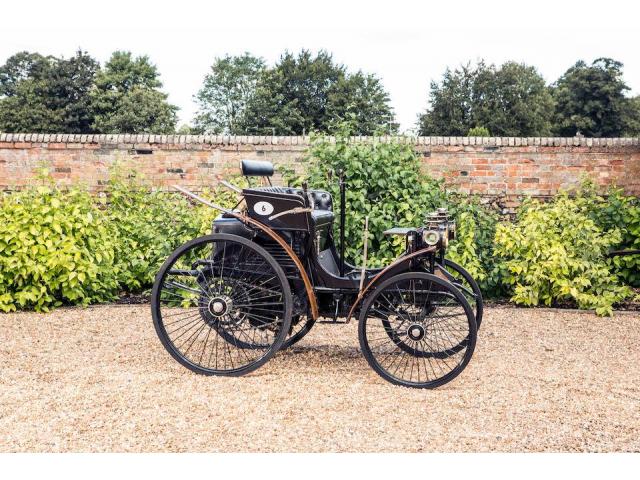1894 Peugeot Type 5 2.5hp Twin-cylinder Two-seater
- Brand: Peugeot
During the great Paris Exhibition of 1889 Wilhelm Maybach arrived with his new Daimler Stahlrad. Powering it was a new, perhaps the most famous of all Daimler and Maybach's creations, being the V-twin cylinder engine turning at 700-800rpm. At a meeting in Valentigney (the Peugeot headquartes) in late 1888, Emile Levassor, Armand Peugeot and Gottlieb Daimler had convened, a result of which in early 1889 was a contract between Daimler and his Paris business agent Madame Sarazin, wherein the widow agreed to pay Daimler 12 percent of the price of all engines made under his patents in France. The following year Mme Sarazin and Levassor were married and Panhard-Levassor commenced manufacturing the Daimler V-twin engines under licence predominantly making them for Peugeot and their own workshops, both companies producing their first petrol cars with this engine in 1890.
Pioneers of the French motor industry, Peugeot had sold its first petrol car in 1891. Three years later, keen to prove the merits of its motor cars, Peugeot entered a team of five specially-prepared automobiles for the world's first long-distance motoring competition, a reliability trial of "voitures sans chevaux" from Paris to Rouen. At the controls of entry No 27, a Peugeot Type 5 powered by a rear-mounted Daimler vee-twin engine, was the company's gifted engineer Louis Rigoulot. He had already demonstrated the practicality of the Peugeot carriage by following the 1891 1,200km Paris-Brest cycle race in one of the company's earliest cars and successfully completing the course within the time limit.
The Type 5 "quadricycle à gazoline" had been specifically developed for the race: Peugeot achieved a 20 per cent weight saving in the design to give a better power-to-weight ratio over their standard production (Type 3) cars. Only 14 Type 5 cars were built.
Paris-Rouen was where motor sport really began: held on Sunday 22nd July 1894, the trial was organised by the newspaper 'Le Petit Journal'. Of the 102 entries, just 21 cars had passed the eliminating trials held during the previous week and were set off at 8am on a fine morning for the 79-mile journey.Seventeen cars reached Rouen, averaging between 6.1 and 11.6 miles per hour after taking into account compulsory stops, most notably for a protracted lunch!
All five of the Peugeot team finished, and were the highest-placed petrol cars. Rigoulot finished 11th at an average speed of 9.1 mph. Peugeot was adjudged by the organising committee to have shared the first prize of 5,000 francs (£200) with Panhard-Levassor. Interestingly, one of the other drivers in the Paris-Rouen, a Monsieur Dubois of Chantilly who finished 10th in a Panhard, was so taken by the performance and design of Rigoulot's Peugeot that he appears to have bought the car from the factory once it was released.
Descriptions & pictures by conceptcarz & bonhams
| Specification | |
| Production Start | 1894 |
| Production End | 1895 |
| Country of origin | France |
























